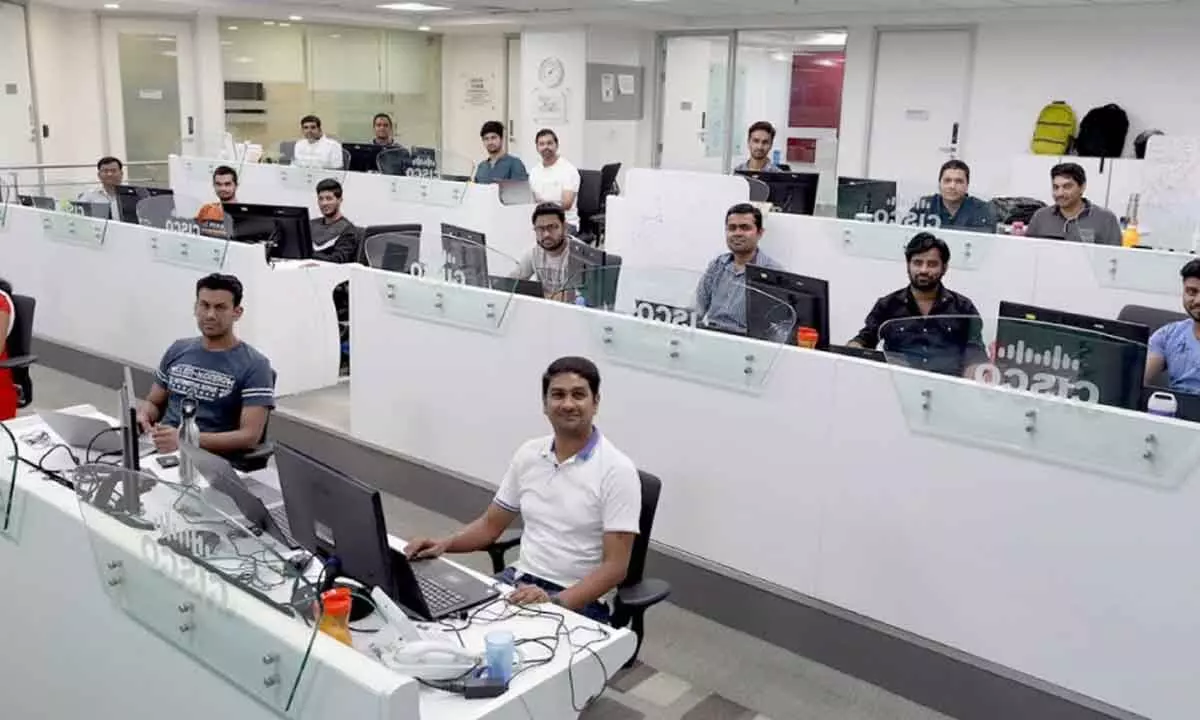Live
- NCC Day grandly celebrated at SITAM
- CITU demands rollback of strategic sale of VSP
- 7-Year-old girl sexually assaulted in Tirupati
- PM Modi highlights govt's efforts to make Odisha prosperous and one of the fastest-growing states
- Hezbollah fires 200 rockets at northern, central Israel, injuring eight
- Allu Arjun's Family Appearance on Unstoppable with NBK Breaks Viewership Records
- Unity of hearts & minds essential for peace & progress, says J&K Lt Governor
- IPL 2025 Auction: I deserve Rs 18 cr price, says Chahal on being acquired by Punjab Kings
- EAM Jaishankar inaugurates new premises of Indian embassy in Rome
- Sailing vessel INSV Tarini embarks on second leg of expedition to New Zealand
Just In
Small cities catch IT companies fancy


Indian IT companies are moving to tier-II cities in droves. As attrition war rages, many companies are following a hub-and-spoke model.
Indian IT companies are moving to tier-II cities in droves. As attrition war rages, many companies are following a hub-and-spoke model. Under this approach, many small centres are being set up that are connected to a nearby big centre, preferably situated in a metro. Though this is not a new approach, IT companies have not been focusing on this model for quite some years now. However, the Covid pandemic has changed the scenario.
After working from home for more than 18 months, many employees are not willing to come back to their offices physically in metro centres. Many junior-level employees had left their rented places at metro centres and are not keen to come back to their base centres leaving home towns. Especially, women employees with family are keen to work from small cities rather than coming back to metro centres. Against this backdrop, the IT companies are seeing a higher number of resignations from employees when they are being asked to resume offices from metro offices – even for a few days every week. Such a trend is supported by a robust demand for technology talent. Currently, engineers are in high demand as digital adoption across enterprises is moving ahead at a faster pace. Startups, technology centres of global companies and other organisations are hiring techies to enable this digital transformation.
Availability of alternatives is prompting employees to opt for those job opportunities that are giving work-from-home or nearby centres. No wonder, this has emerged as the main factors for surging attrition numbers which are more than 20 per cent for most large and tier-II IT companies now.
To mitigate the risk and contain attrition numbers, IT companies are moving closer to employees. Tier-II and tier-III cities are best placed for opening small centres which employees are preferring over metro cities. Therefore, all large companies including Tata Consultancy Services, Infosys, Wipro, HCL Technologies, and Tech Mahindra among others are opening up centres in small cities. For instance, Infosys recently said that it is now opening up centres in Coimbatore, Vizag, Kolkata and Noida. It already had small centres in Indore and Nagpur. Tier-II and III centres are not the same as they used to be a decade back. These cities have seen high investment in infrastructure developments, making those attractive for investments by the IT sector.
Moreover, initiatives like Digital India and Startup India campaigns, the JAM trinity and Smart Cities Mission have created a very conducive ecosystem for development. The combination of right work-life balance and healthy infrastructure makes these cities very attractive for the services sector. The country has already seen developed tier-II centres like Visakhapatnam, Trivandrum, Bhubaneswar, Indore, Jaipur and many more wherein several IT companies are already present. Similarly, an estimate by Zinnov shows that about 976 MNCs have set up 1,257 Global In-house Centres (GICs) in India, out of which 68 GICs are in tier-II locations.
Interestingly, opening up small centres is a model being followed by large IT firms in geographies like the US and Europe. As technology removes distance and digital adoption accelerates, small centres of IT companies can ensure growth with stability to the Indian IT industry.

© 2024 Hyderabad Media House Limited/The Hans India. All rights reserved. Powered by hocalwire.com






